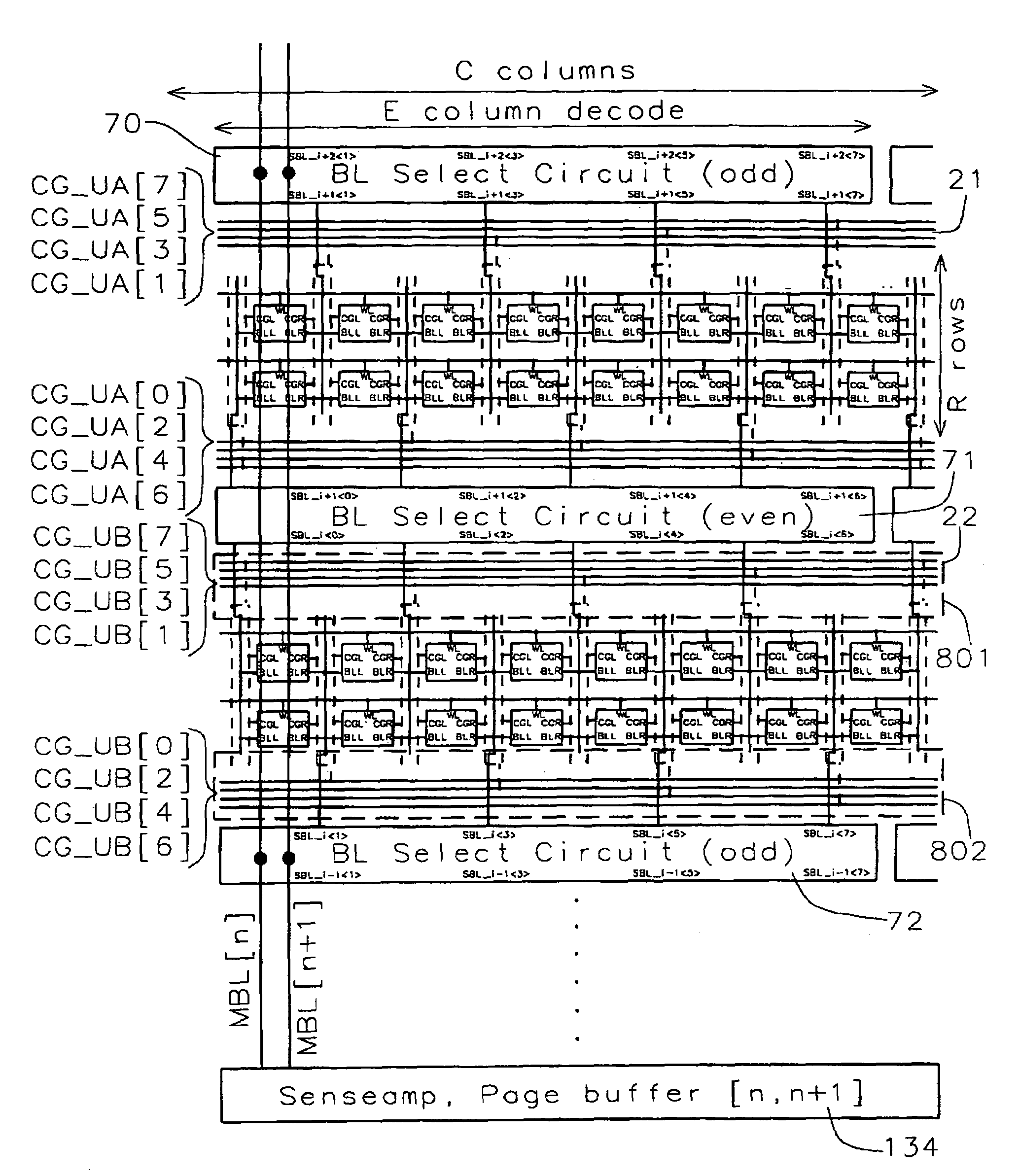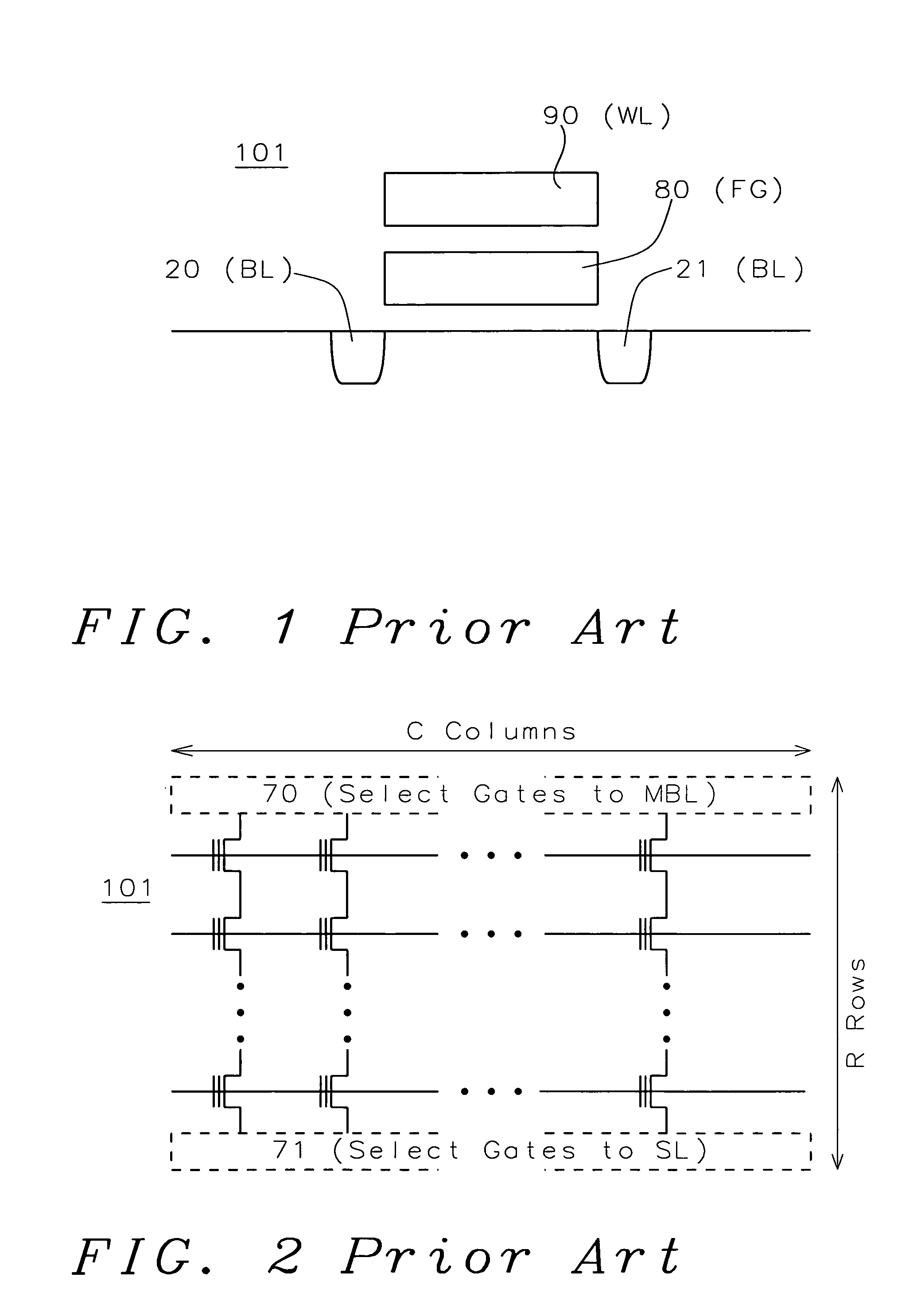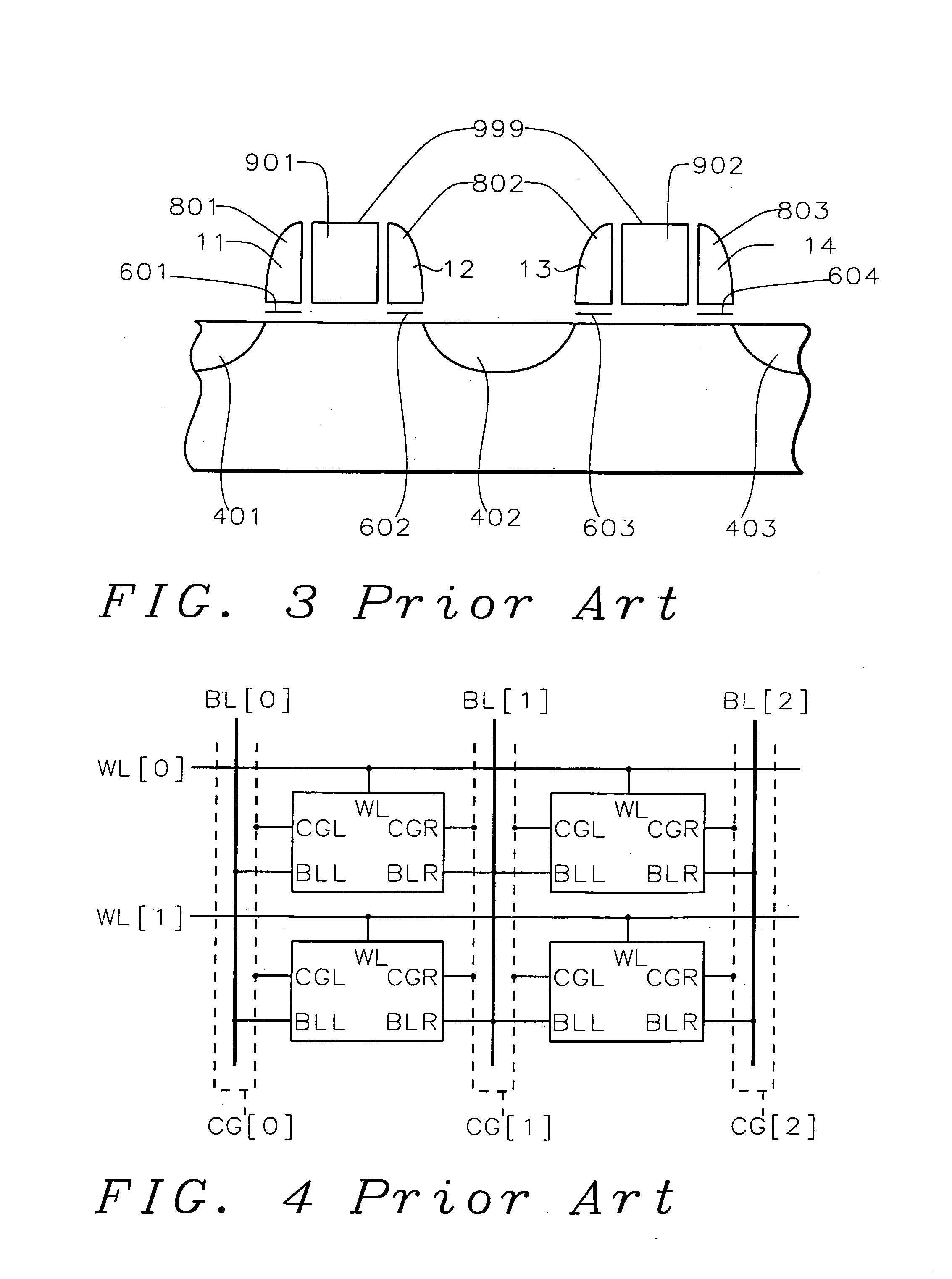Nonvolatile memory array organization and usage
a non-volatile, array technology, applied in the field of semiconductor memory, can solve the problems of data width historically limited, high wl program disturb, complicated decoding area, etc., and achieve the effect of reducing the width of each sector, and increasing the program and read bandwidth
- Summary
- Abstract
- Description
- Claims
- Application Information
AI Technical Summary
Benefits of technology
Problems solved by technology
Method used
Image
Examples
first embodiment
[0036]Array organization for Twin MONOS memory cells. In this invention, a new array organization is proposed. Unlike the array types described in the preceding Background section, cells that share the same word line do not necessarily share the same erase block. A schematic and block representation is given in FIG. 6. Twin MONOS cells are arranged in the diffusion bit array, with poly WL's running in a horizontal direction and diffusion BL's and poly CG's both running orthogonal to the WL's in a vertical direction.
[0037]In this figure, several memory units are shown which share a common sense amplifier / page buffer. Each UNIT's selected sub bit lines (SBL's) are connected via the UNIT's BL selection circuit to a global main bit line (MBL) which is connected to the sense amplifier / page buffer.
[0038]Two memory UNITS are shown in detail, UNIT A 21 and UNIT B 22. The number of rows in a single UNIT is R and the number of columns is C.
[0039]It is also possible to reduce the RC delay of t...
second embodiment
[0052]Depending on the metal pitch layout constraints, this method of CG segmentation may require an extra metal for the SBL. In the first array organization embodiment, the diffusion SBL is connected to the metal MBL in the sub-decode circuit. But in the second embodiment method, the diffusion SBL's may need to be connected to a metal SBL in the BL and CG stitch area. Then the metal SBL will be connected to the metal MBL in the sub-decode circuit.
[0053]As an alternative, the SBL and MBL may share the same metal layer by widening the cell pitch slightly.
[0054]Another alternative is shown in FIG. 13. The diffusion SBL of one segment could be connected through to the diffusion of the neighboring segment by either changing the order of CG and BL contacts (place the CG contacts closer to the memory array edge than the BL contact), or by creating a pass-through diffusion bridge 49.
PUM
 Login to View More
Login to View More Abstract
Description
Claims
Application Information
 Login to View More
Login to View More - R&D
- Intellectual Property
- Life Sciences
- Materials
- Tech Scout
- Unparalleled Data Quality
- Higher Quality Content
- 60% Fewer Hallucinations
Browse by: Latest US Patents, China's latest patents, Technical Efficacy Thesaurus, Application Domain, Technology Topic, Popular Technical Reports.
© 2025 PatSnap. All rights reserved.Legal|Privacy policy|Modern Slavery Act Transparency Statement|Sitemap|About US| Contact US: help@patsnap.com



